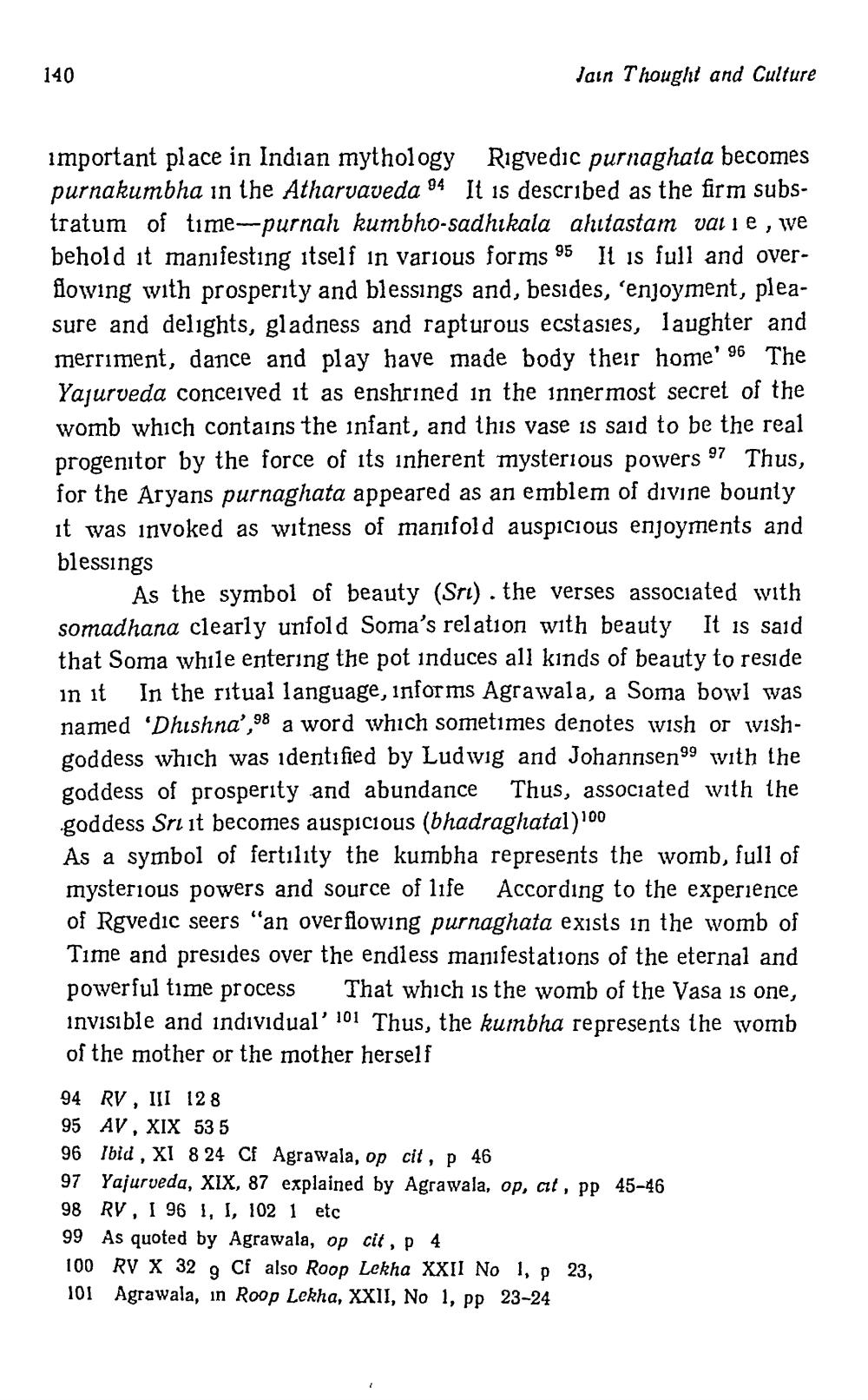________________
140
Jain Thought and Culture
important place in Indian mythology Rigvedic purnaghata becomes purnakumbha in the Atharvaveda 04 It is described as the firm substratum of time---purnah kumbho-sadhikala ahitastam vai ie , we behold it manifesting itself in various forms 95 It is full and overflowing with prosperity and blessings and, besides, 'enjoyment, pleasure and delights, gladness and rapturous ecstasies, laughter and merriment, dance and play have made body their home' 96 The Yajurveda conceived it as enshrined in the innermost secret of the womb which contains the infant, and this vase is said to be the real progenitor by the force of its inherent mysterious powers 97 Thus, for the Aryans purnaghata appeared as an emblem of divine bounty it was invoked as witness of manifold auspicious enjoyments and blessings
As the symbol of beauty (Srl). the verses associated with somadhana clearly unfold Soma's relation with beauty It is said that Soma while entering the pot induces all kinds of beauty to reside in it in the ritual language, informs Agrawala, a Soma bowl was named 'Dhishna',98 a word which sometimes denotes wish or wishgoddess which was identified by Ludwig and Johannsen99 with the goddess of prosperity and abundance Thus, associated with the goddess Sri it becomes auspicious (bhadraghatal)100 As a symbol of fertility the kumbha represents the womb, full of mysterious powers and source of life According to the experience of Rgvedic seers "an overflowing purnaghata exists in the womb of Time and presides over the endless manifestations of the eternal and powerful time process That which is the womb of the Vasa is one, invisible and individual' 101 Thus, the kumbha represents the womb of the mother or the mother herself
94 RV, III 128 95 AV , XIX 535 96 Ibid , XI 8 24 Cf Agrawala, op cit, p 46 97 Yajurveda, XIX, 87 explained by Agrawala, op, ct, pp 45-46 98 RY, I 96 I, I, 102 1 etc 99 As quoted by Agrawala, op cit, p 4 100 RV X 32 9 Cfalso Roop Lekha XXII No 1, p 23, 101 Agrawala, in Roop Lekha, XXII, No 1, pp 23-24




